The Vancouver Courthouse, bordered by Georgia, Hornby, Howe and Robson, was designed by celebrity architect Francis Rattenbury in 1907 and completed in 1911. Since 1983, it has been home to the Vancouver Art Gallery. Pamela Post wanted to know what sat on the site before. What she found was nothing and everything.
By Pamela Post
The answer surprised both me and the archivist at Vancouver Archives, as we peered at the old city map from the 1890s to early 1900s. Apparently, nothing.
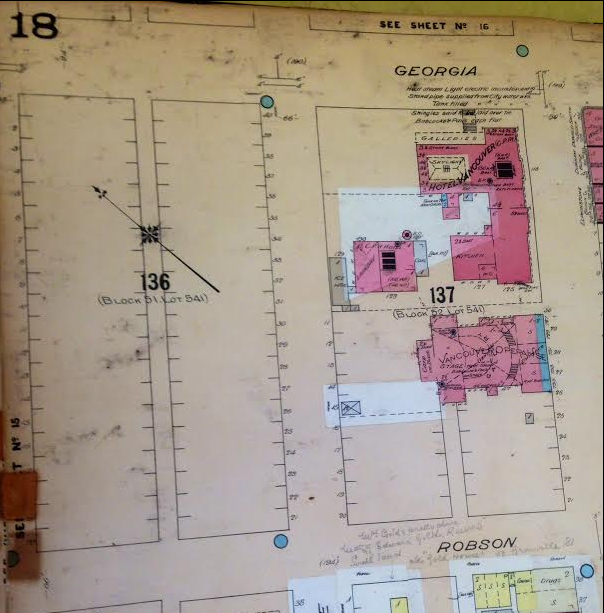
Even though the second Hotel Vancouver was next door (still awaiting its Italianate additions built from 1912 to 1916), Christ Church Cathedral just down Georgia at Burrard with houses and buildings dotting the area–the Square block bordered by Georgia, Hornby, Howe and Robson was a blank space on the map, save for the prosaic descriptor: Block 51, District Lot 541.
Until men and their horses plowed the sod for the courthouse in 1909, it was nothing but a vacant lot, lumpy clear-cut CPR land that was bought by the province to build the courthouse that would replace the 1888 structure at Hastings and Cambie.
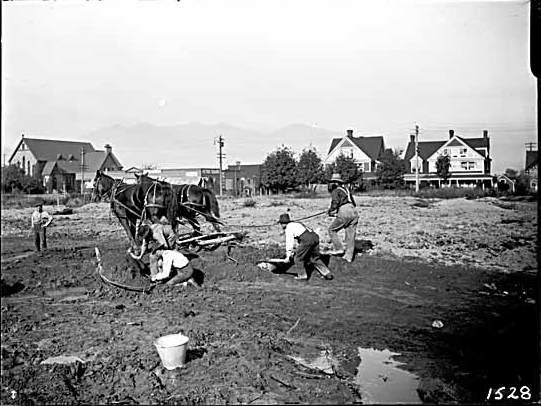
Upon its completion in 1911 the Vancouver World gushed that the building “is one of the finest in the Empire!” While a local judge told a reporter that it equaled the new Strand Courts in London, England. The colonial fervor reached its height in 1912 at the official opening ceremony which was attended by the Duke of Connaught—Canada’s Governor General.
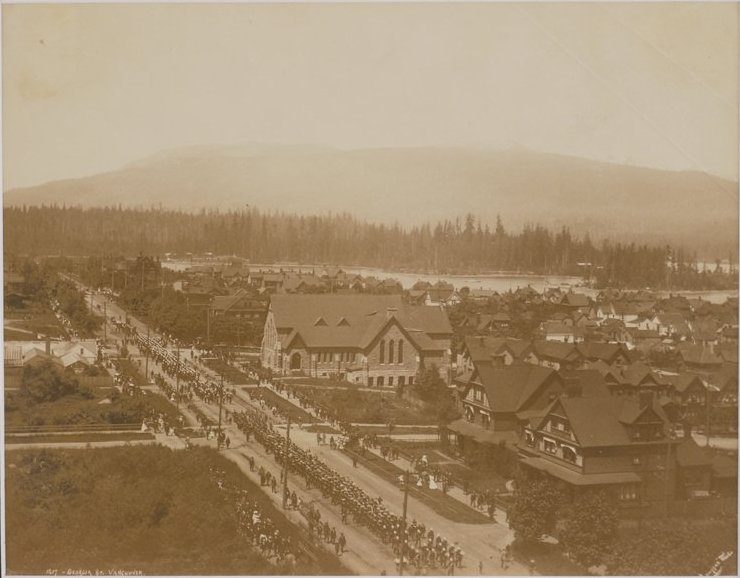
Over a century later, on this controversial Canada Day 150, the question ‘What was there before?’ demands a much deeper answer viewed through the lens of over 10,000 years of indigenous history in a place where Coast Salish peoples lived and thrived for millennia.
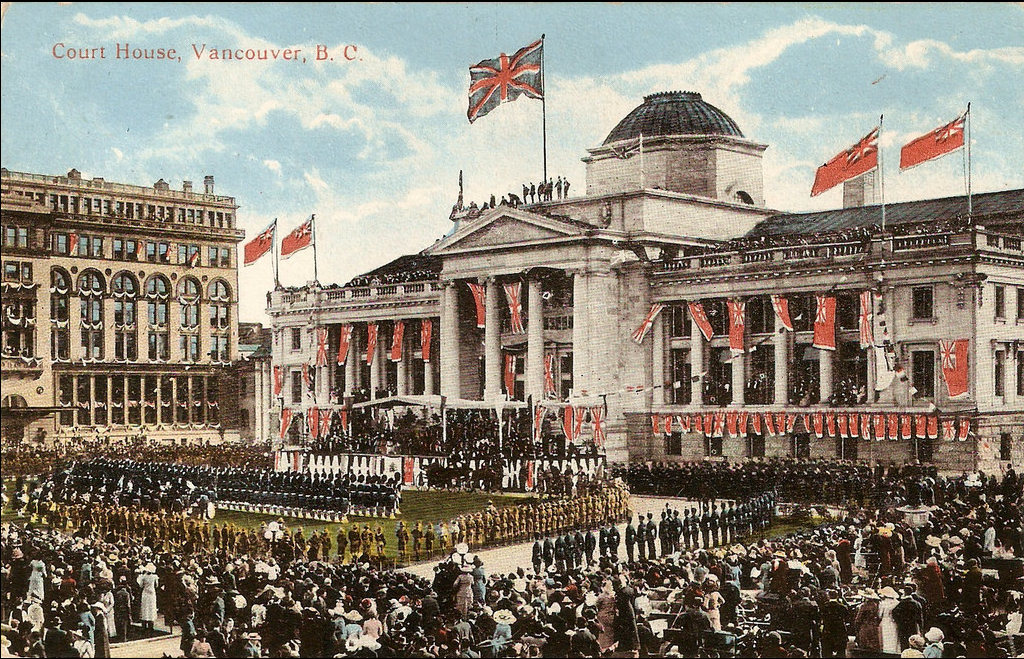
In 1996, Gitsxan artist and elder Doreen Jensen spoke to that question in an essay she wrote for an exhibition of contemporary First Nations art that she co-curated for the Vancouver Art Gallery.
“Just 112 years ago, a powerful rainforest covered the place where the Vancouver Art Gallery now stands. Trees rose 312 feet into the coastal sky. Streams made their way through the woodland where bears, beavers, wolves, elk and other animals made their homes. First Nations people were part of this complex ecosystem. They harvested trees for lumber, cutting slabs from the standing trees in a way and a season so the trees could continue to thrive.”
For decades, she writes, indigenous peoples and their cultures were treated with contempt within the walls of the Vancouver courthouse and later the VAG.
LaxHösinsxw is an important word in the Gitxsan language, writes Jensen, explaining that it means honouring and respecting others, place and space.
“In this city, at this site and at this time in history, it is a word we might learn from. The place and space in which the Vancouver Art Gallery stands, physically and metaphorically, is a contested one. Here, where a city has been incompletely exchanged for the forest and newcomers have incompletely replaced the aboriginal inhabitants, LaxHösinsxw may be key to the creative process and to our future.”
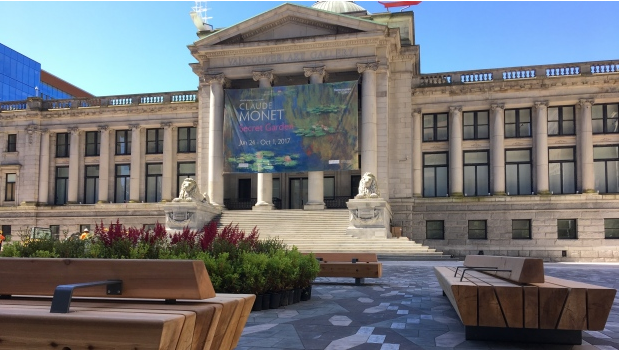 Currently, the new $9.6 million dollar plaza at the VAG showcases a very European Monet poster. I would have preferred to see the invocation Jensen wrote about that site:
Currently, the new $9.6 million dollar plaza at the VAG showcases a very European Monet poster. I would have preferred to see the invocation Jensen wrote about that site:
“The past creates an energy in the present, whether we know it or not. The ancient forest and its metamorphosis into timber, then real estate, is still part of this place.”
Pamela Post is an award-winning journalist, broadcaster and creative writer. She teaches journalism at Langara College. She was born and lives in Vancouver’s West End and is Tsimshian First Nations from Kitsumkalum on her father’s side.

